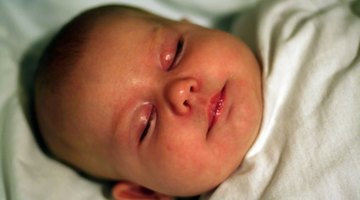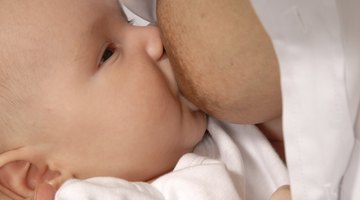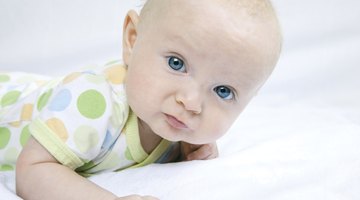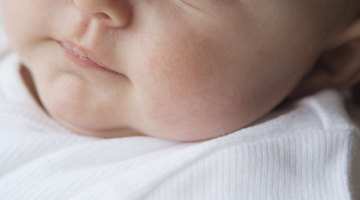Head Twitching in Babies
Head twitching in babies doesn't always mean that your baby has a serious problem.
In some cases, twitching occurs simply because a baby has an immature nervous system. She may soon grow out of these movements. However, if twitches are vigorous, very frequent or persist for a long period of time, consult your doctor. It's potentially a sign of a more serious neurological condition.
Spasmus Nutans
Spasmus nutans often occurs in babies between the ages of 4 months and 1 year, according to the University of Maryland Medical Center. Although the exact cause is unknown, the condition usually subsides after a few months.
One of the main symptoms includes the bobbing and twitching of a baby's head. It may also cause a baby's eyes to flicker and dart around occasionally or cause her head to tilt at a strange angle.
Shuddering Attacks
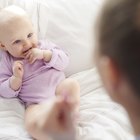
Shallow Breathing in Infants
Learn More
Shuddering attacks in babies are often confused with epileptic fits, according to "Imitators of Epilepsy." These attacks frequently start almost from birth, although they can appear several months later. With a juddering attack, the baby's head twitches rapidly for a few seconds, almost as though he's shivering. The condition is often related to the baby's young nervous system becoming over-stimulated, particularly after feeding time.
Tics
Although tics often develop in older children and teenagers, some babies start to show signs of facial and head tics. This can include apparently involuntary twitching of the head. In many cases, these tics disappear over time.
However, some more serious tics develop into disorders such as Tourette's syndrome.
This later tends to involve verbal tics and spasms. If your baby's tic lasts for a year, speak with your doctor about possible treatments.
Infantile Spasms

Signs of Head Trauma to a Baby
Learn More
Infantile spasms cause a baby to have short seizure clusters. The seizures make a child's head lift up and twitch briefly. Other symptoms include bending at the waist and stiffening, before loosening up and crying. Attacks most often occur early in the morning, according to the American Academy of Neurology.
In serious cases, repeated infantile spasms cause developmental problems. Treatments may include the use of drugs similar to epilepsy medication.



